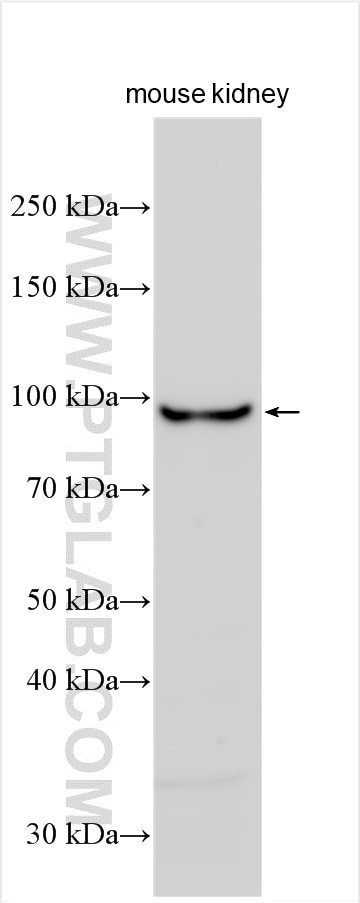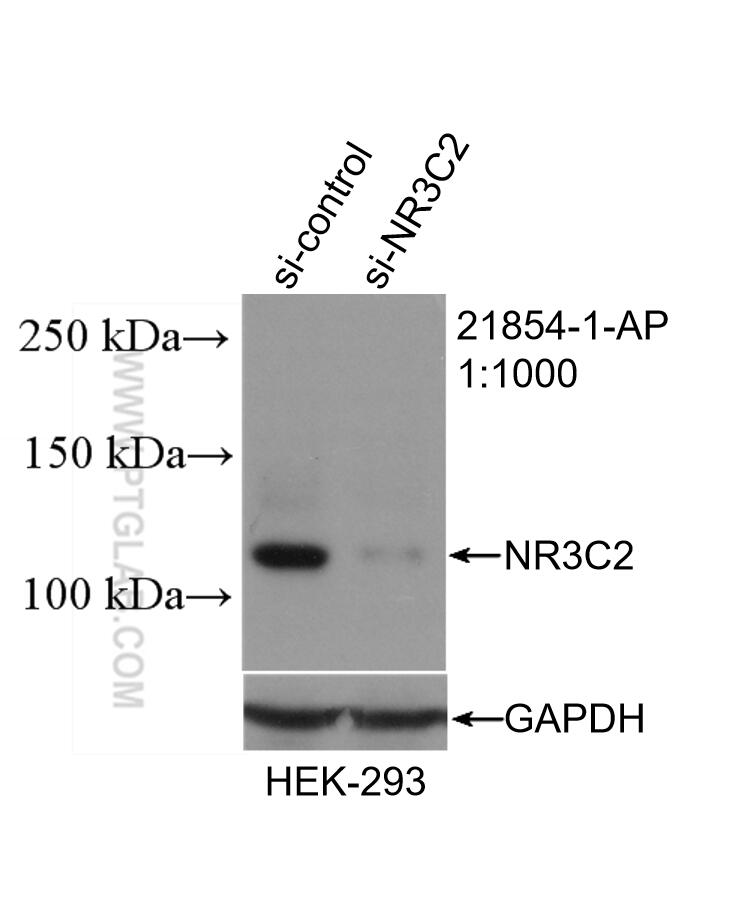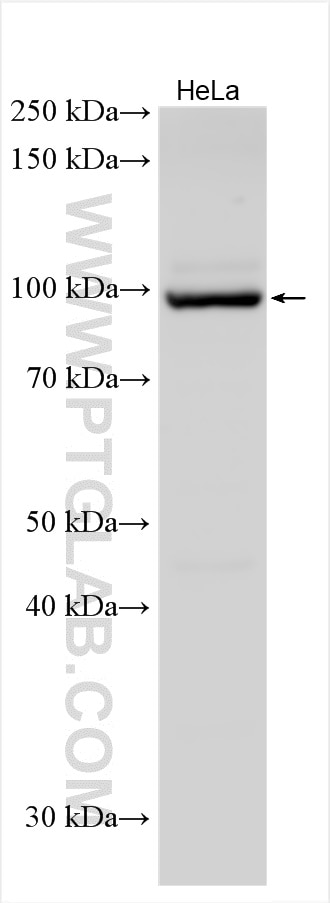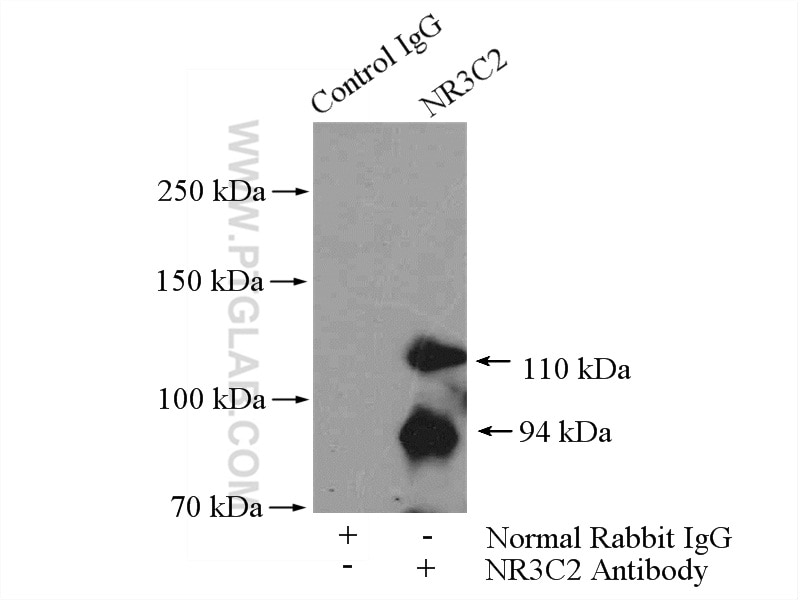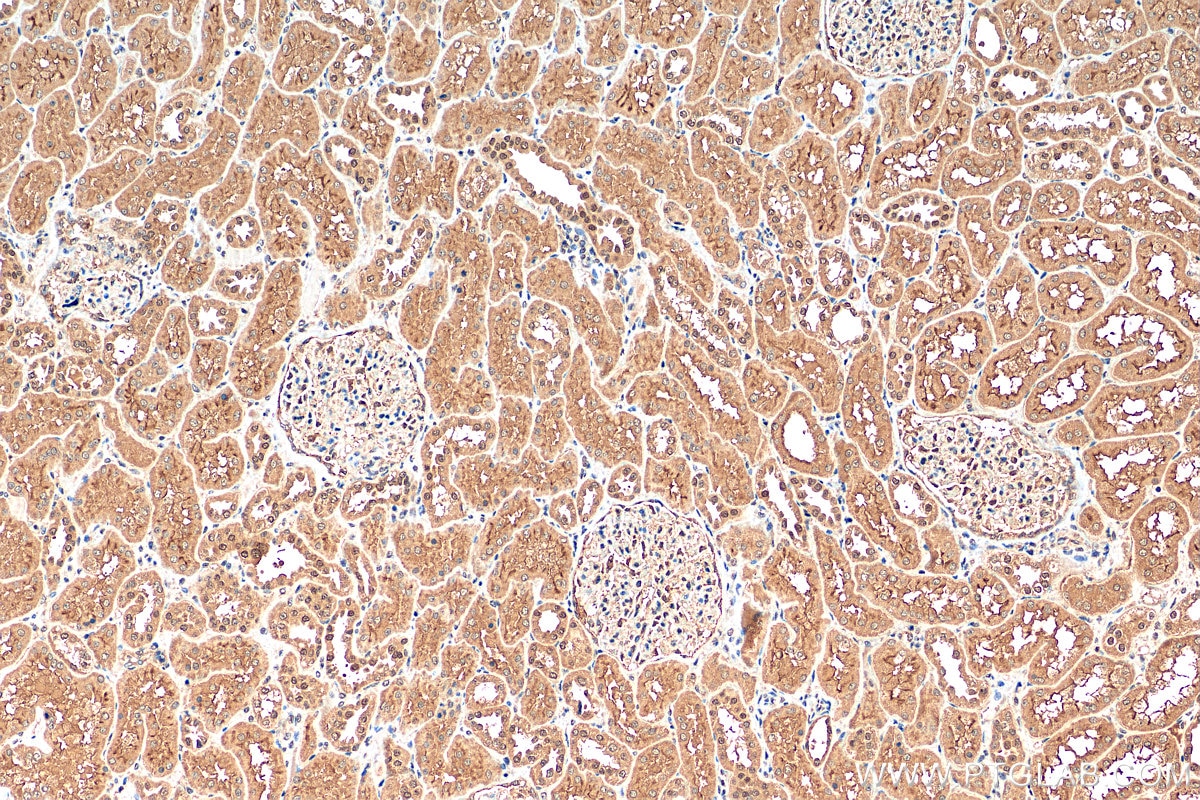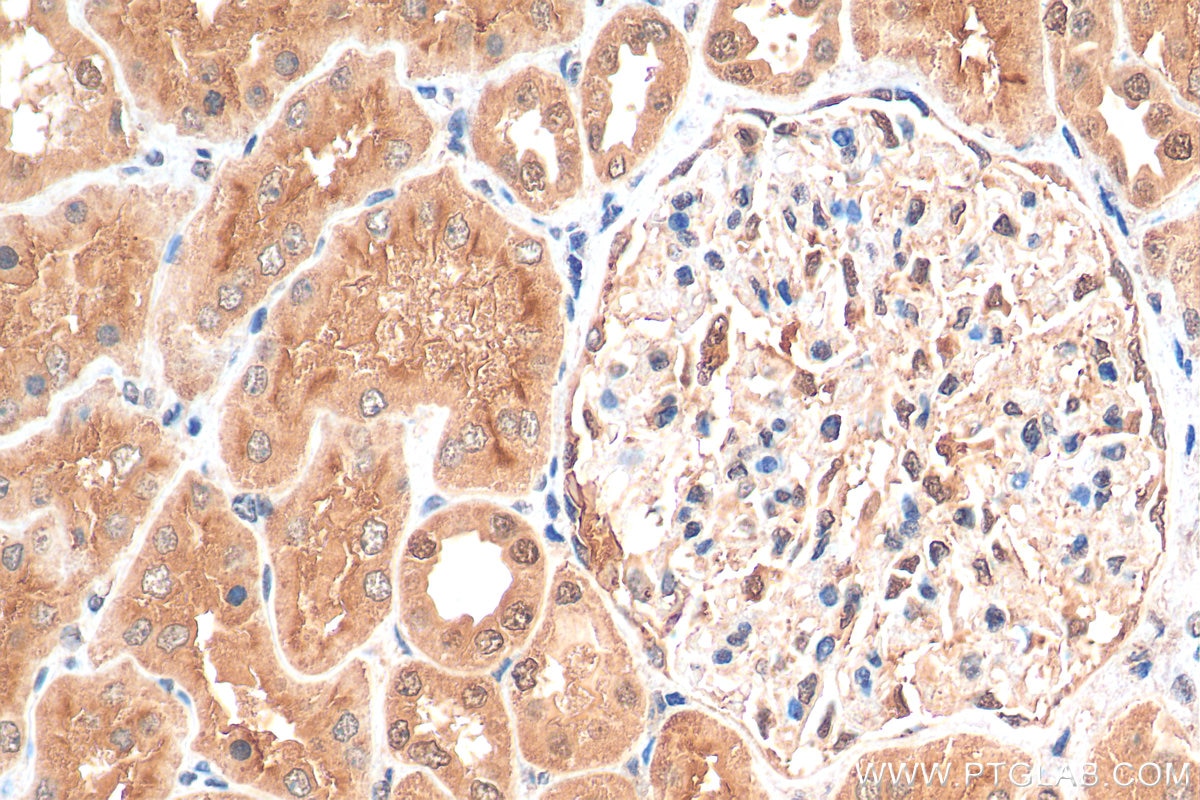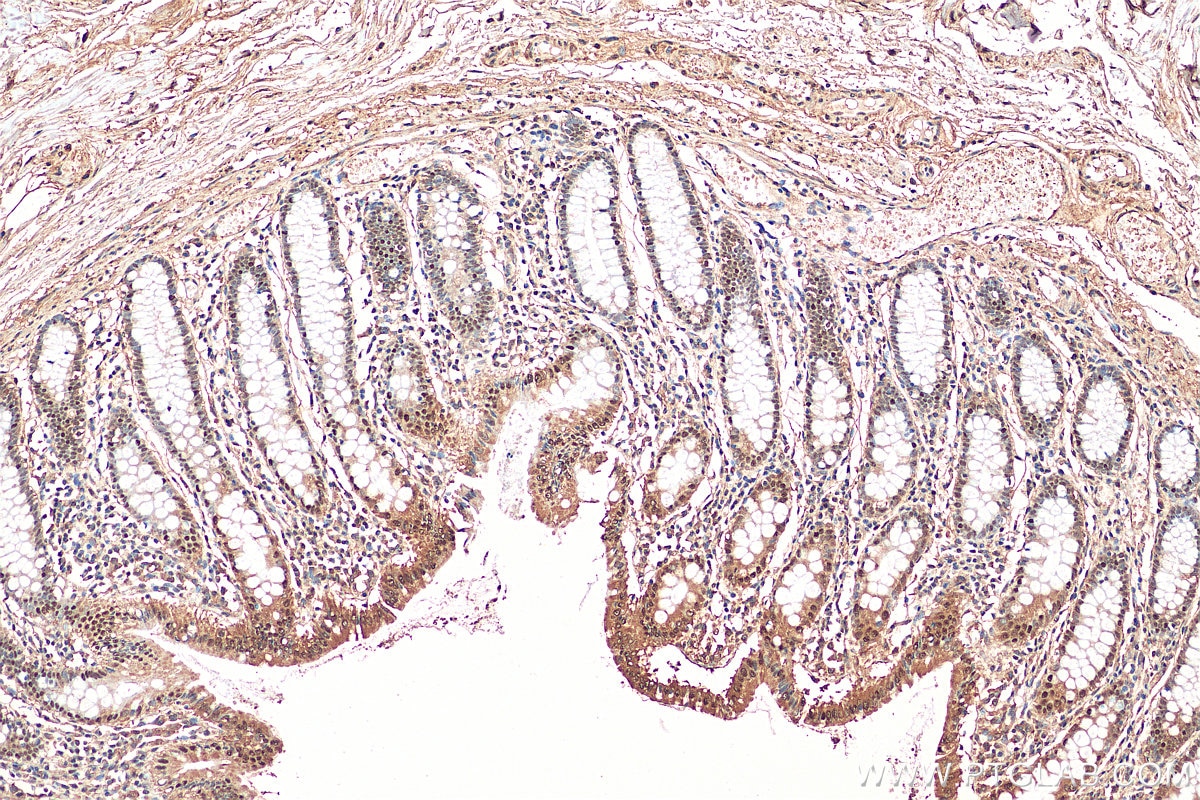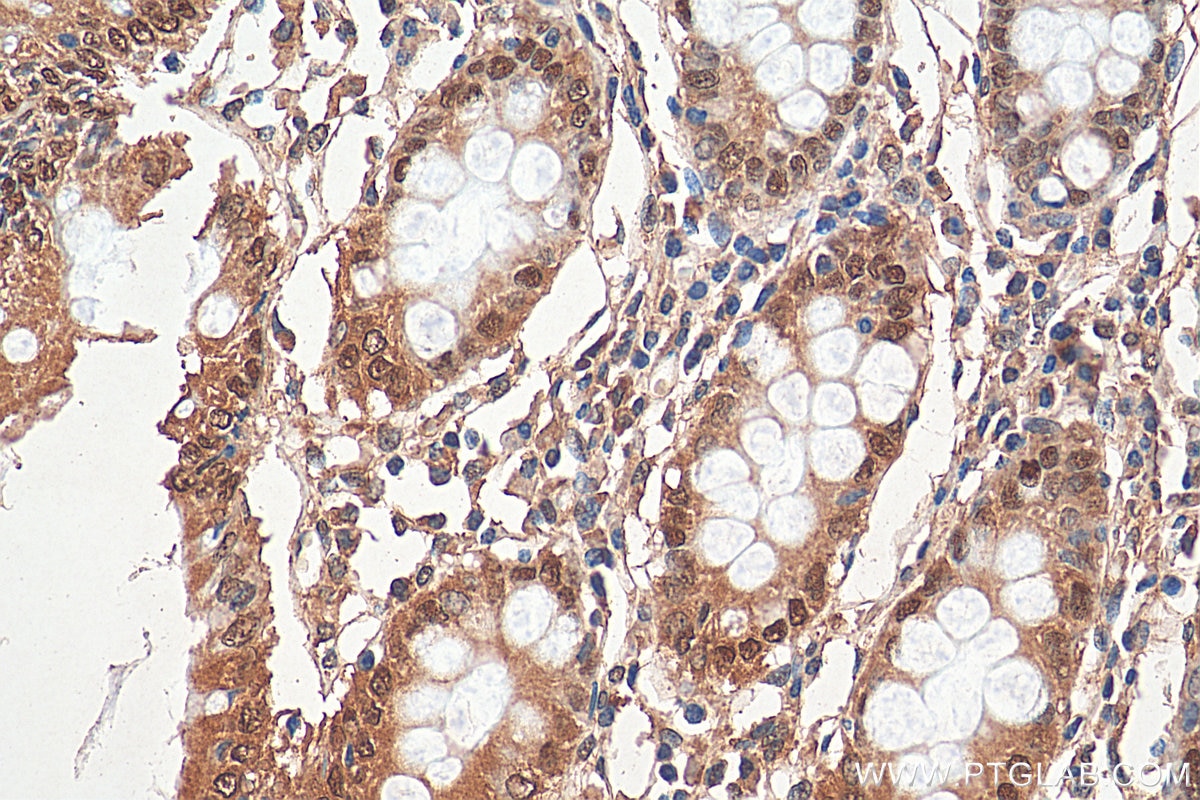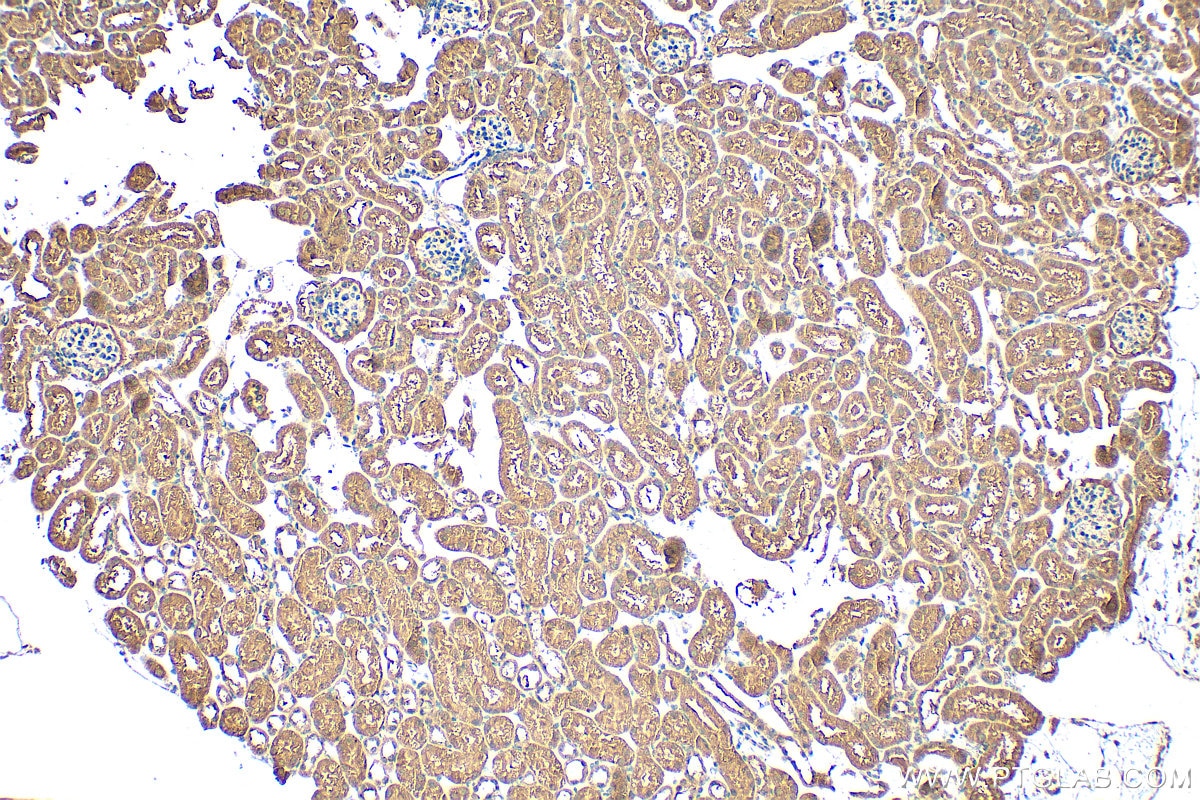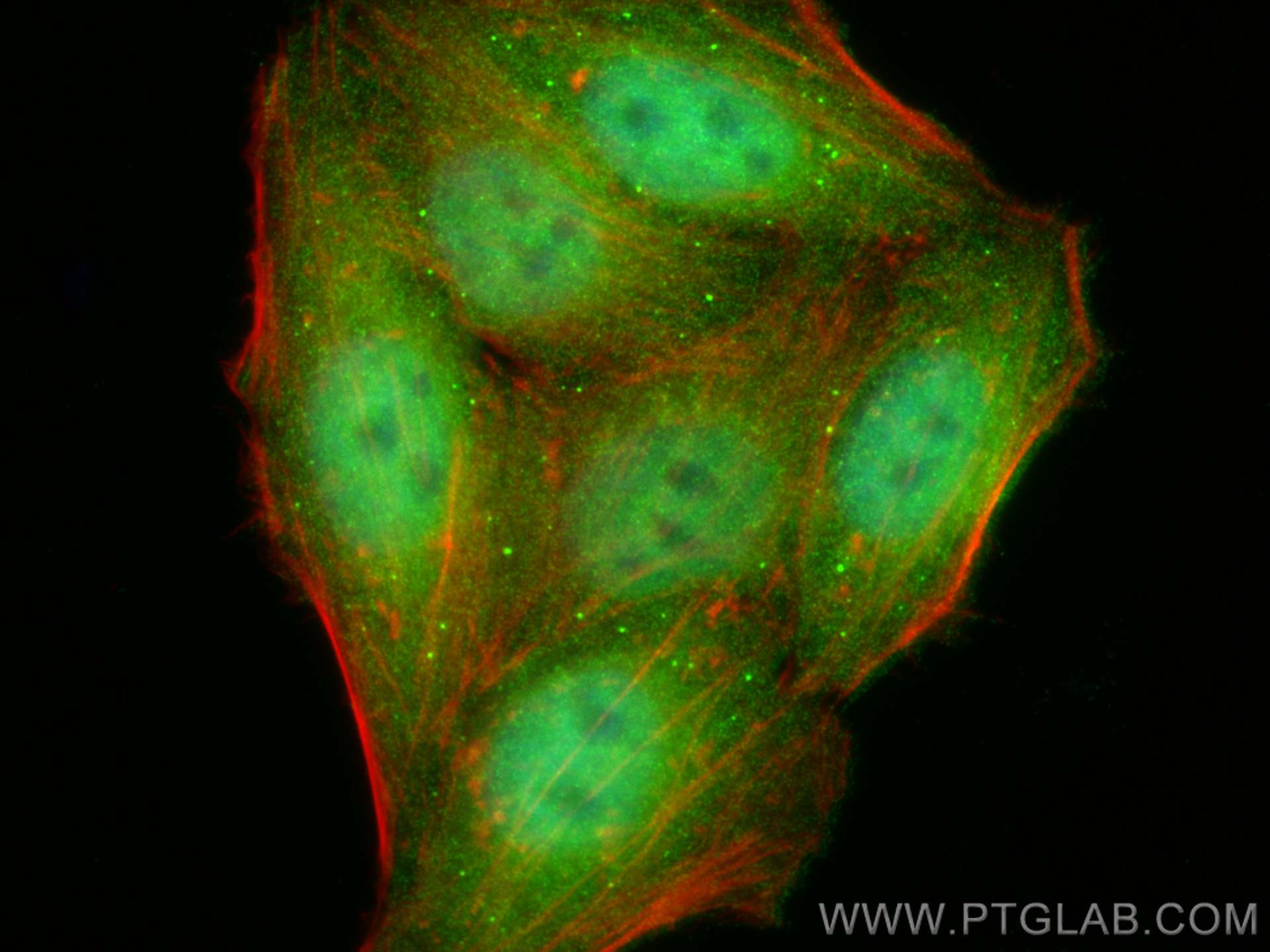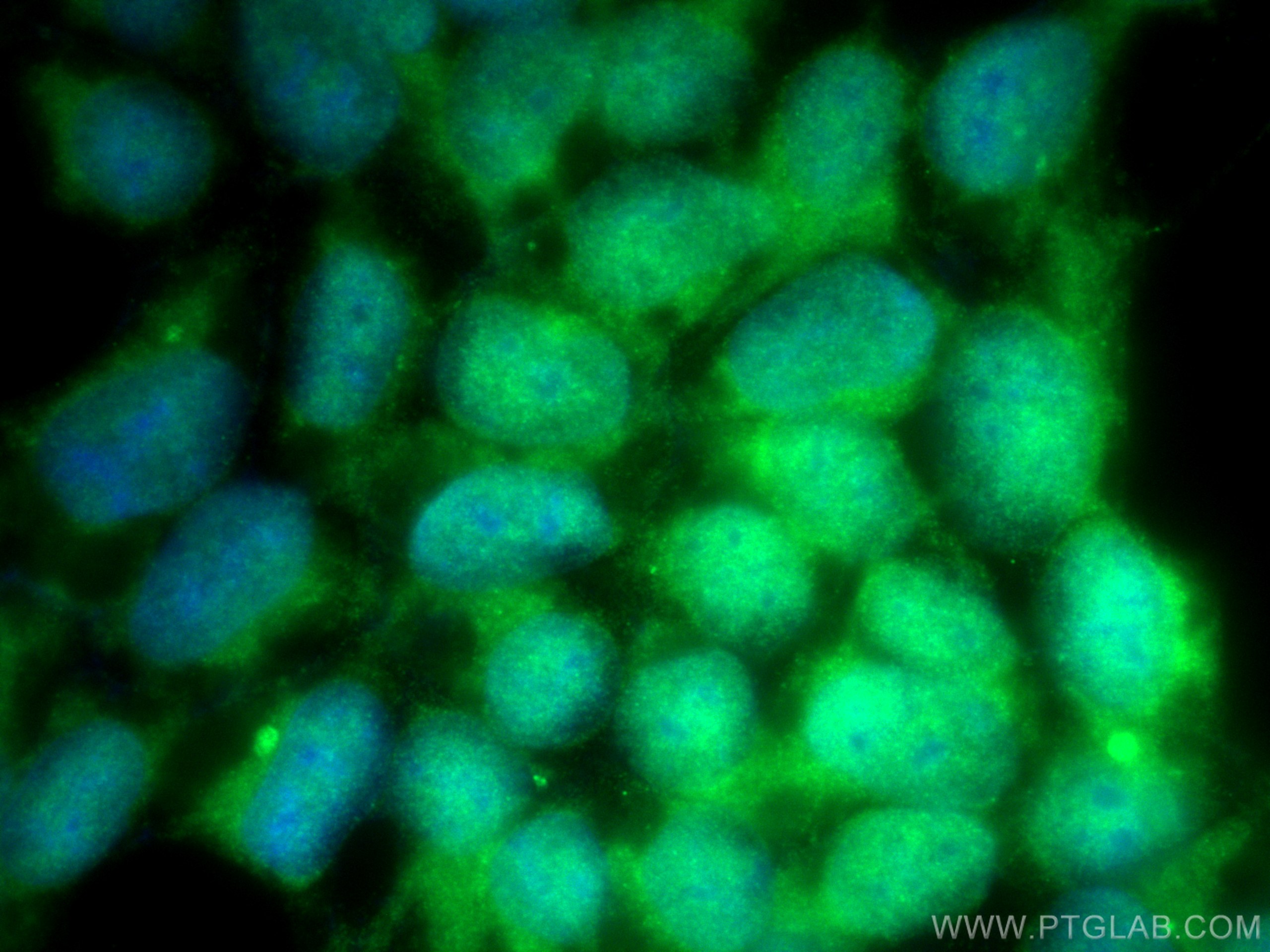- Phare
- Validé par KD/KO
Anticorps Polyclonal de lapin anti-NR3C2
NR3C2 Polyclonal Antibody for WB, IHC, IF/ICC, IP, ELISA
Hôte / Isotype
Lapin / IgG
Réactivité testée
Humain, souris et plus (2)
Applications
WB, IHC, IF/ICC, IP, chIP, ELISA
Conjugaison
Non conjugué
N° de cat : 21854-1-AP
Synonymes
Galerie de données de validation
Applications testées
| Résultats positifs en WB | tissu rénal de souris, cellules HEK-293, cellules HeLa |
| Résultats positifs en IP | cellules HEK-293 |
| Résultats positifs en IHC | tissu rénal humain, tissu de côlon humain, tissu rénal de souris il est suggéré de démasquer l'antigène avec un tampon de TE buffer pH 9.0; (*) À défaut, 'le démasquage de l'antigène peut être 'effectué avec un tampon citrate pH 6,0. |
| Résultats positifs en IF/ICC | cellules HepG2, cellules HEK-293 |
Dilution recommandée
| Application | Dilution |
|---|---|
| Western Blot (WB) | WB : 1:1000-1:8000 |
| Immunoprécipitation (IP) | IP : 0.5-4.0 ug for 1.0-3.0 mg of total protein lysate |
| Immunohistochimie (IHC) | IHC : 1:50-1:500 |
| Immunofluorescence (IF)/ICC | IF/ICC : 1:200-1:800 |
| It is recommended that this reagent should be titrated in each testing system to obtain optimal results. | |
| Sample-dependent, check data in validation data gallery | |
Applications publiées
| KD/KO | See 1 publications below |
| WB | See 23 publications below |
| IHC | See 11 publications below |
| IF | See 8 publications below |
| ChIP | See 3 publications below |
Informations sur le produit
21854-1-AP cible NR3C2 dans les applications de WB, IHC, IF/ICC, IP, chIP, ELISA et montre une réactivité avec des échantillons Humain, souris
| Réactivité | Humain, souris |
| Réactivité citée | rat, Humain, singe, souris |
| Hôte / Isotype | Lapin / IgG |
| Clonalité | Polyclonal |
| Type | Anticorps |
| Immunogène | NR3C2 Protéine recombinante Ag16410 |
| Nom complet | nuclear receptor subfamily 3, group C, member 2 |
| Masse moléculaire calculée | 984 aa, 107 kDa |
| Poids moléculaire observé | 94-110 kDa |
| Numéro d’acquisition GenBank | BC111758 |
| Symbole du gène | NR3C2 |
| Identification du gène (NCBI) | 4306 |
| Conjugaison | Non conjugué |
| Forme | Liquide |
| Méthode de purification | Purification par affinité contre l'antigène |
| Tampon de stockage | PBS with 0.02% sodium azide and 50% glycerol |
| Conditions de stockage | Stocker à -20°C. Stable pendant un an après l'expédition. L'aliquotage n'est pas nécessaire pour le stockage à -20oC Les 20ul contiennent 0,1% de BSA. |
Informations générales
Nuclear receptor subfamily 3 group C member 2 (NR3C2), also known as Mineralocorticoid receptor (MCR or MR), is a member of the steroid/thyroid /retinoic nuclear hormone receptor superfamily that has been shown to activate gene transcription in response to aldosterone binding. Regulation of the mineralocorticoid receptors occurs through either receptor down-regulation (negative autoregulation) or hormone-mediated upregulation (positive autoregulation). MCR association with HSP 90 appears to be required for hormone binding to MCR and subsequent MCR activation.
Protocole
| Product Specific Protocols | |
|---|---|
| WB protocol for NR3C2 antibody 21854-1-AP | Download protocol |
| IHC protocol for NR3C2 antibody 21854-1-AP | Download protocol |
| IF protocol for NR3C2 antibody 21854-1-AP | Download protocol |
| IP protocol for NR3C2 antibody 21854-1-AP | Download protocol |
| Standard Protocols | |
|---|---|
| Click here to view our Standard Protocols |
Publications
| Species | Application | Title |
|---|---|---|
EMBO Rep High salt activates p97 to reduce host antiviral immunity by restricting Viperin induction. | ||
Oncotarget Impact of prenatal cold stress on placental physiology, inflammatory response, and apoptosis in rats. | ||
Int Immunopharmacol UUO induces lung fibrosis with macrophage-myofibroblast transition in rats. | ||
Behav Brain Res Possible mechanisms of prenatal cold stress induced-anxiety-like behavior depression in offspring rats. | ||
Behav Brain Res Prenatal cold stress: Effect on maternal hippocampus and offspring behavior in rats. |
Avis
The reviews below have been submitted by verified Proteintech customers who received an incentive for providing their feedback.
FH Paloma (Verified Customer) (06-01-2022) | Good performance in ChIP
|
